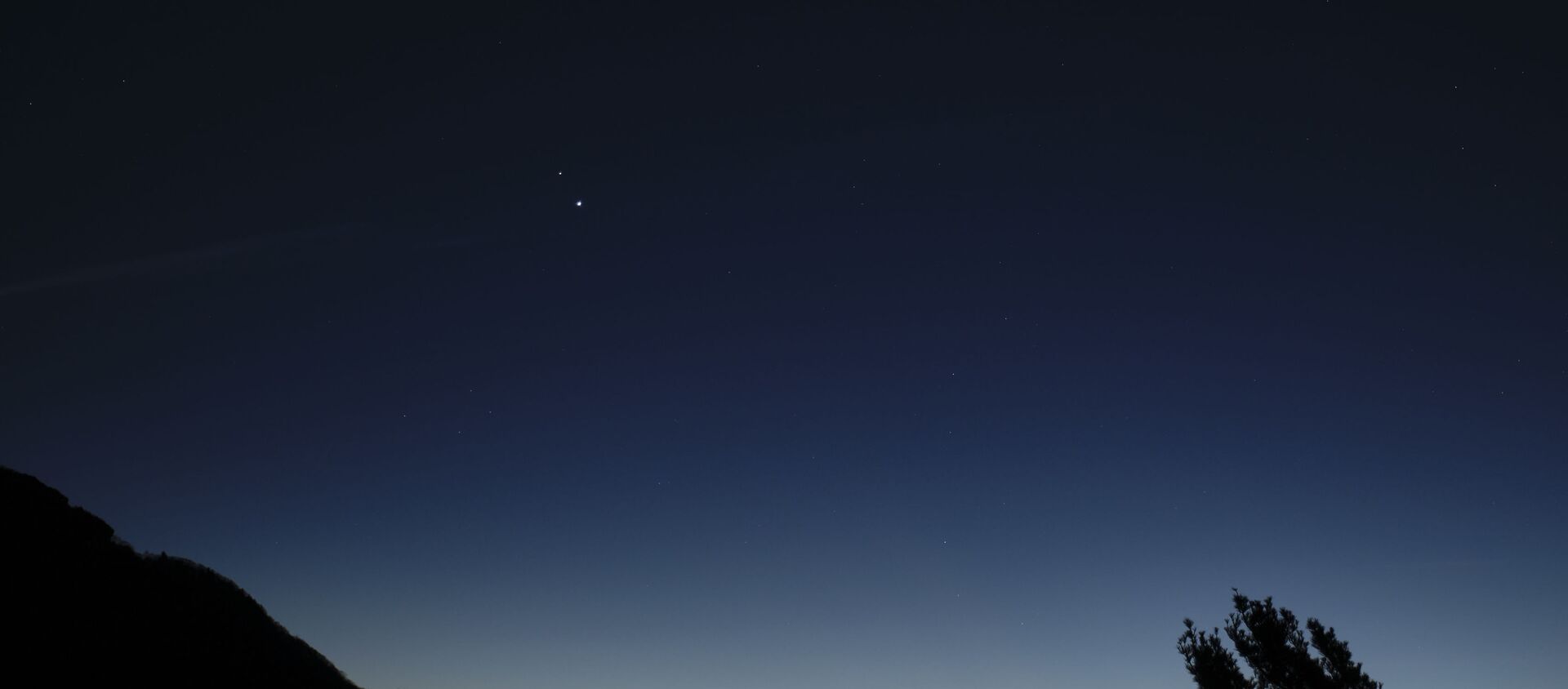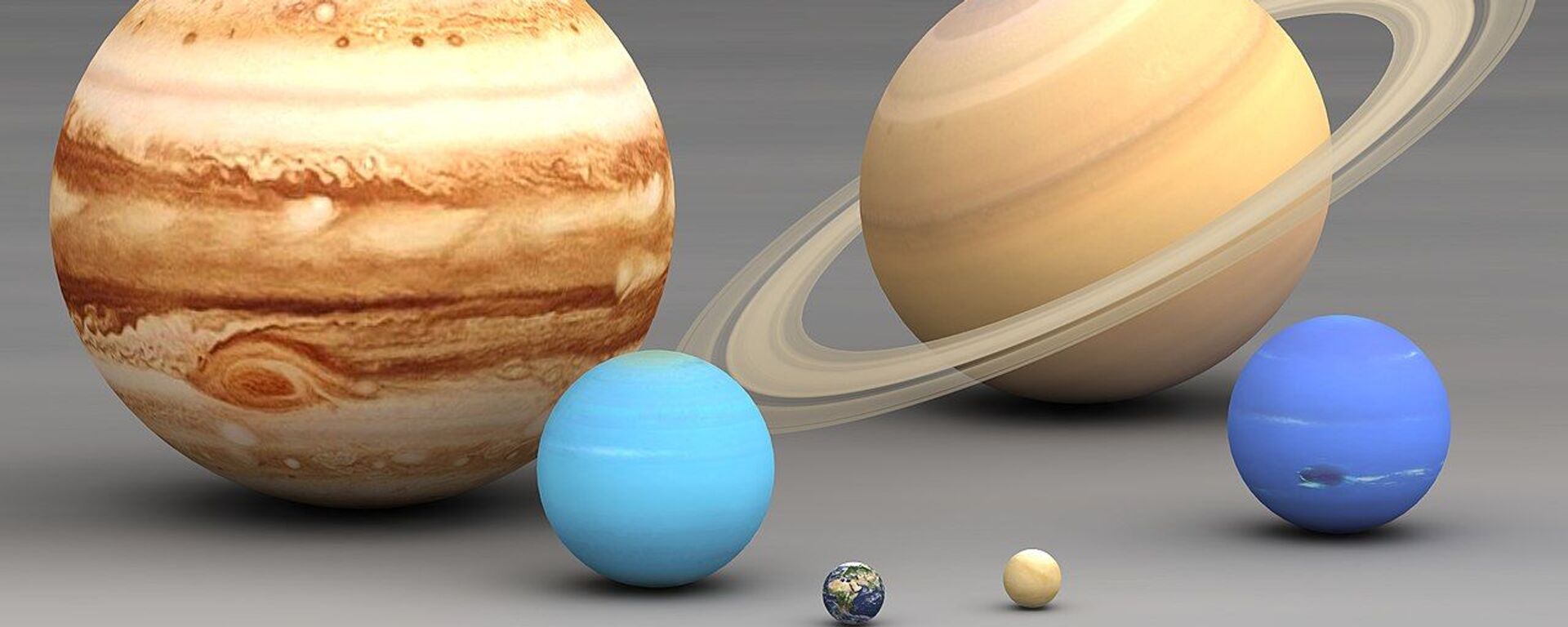https://sputnikglobe.com/20210906/attention-skygazers-september-is-filled-with-unmissable-celestial-conjunctions-1083806759.html
Attention Skygazers! September is Filled With Unmissable Celestial Conjunctions
Attention Skygazers! September is Filled With Unmissable Celestial Conjunctions
Sputnik International
This 22 September is set to mark the autumnal equinox when the sun will appear on the celestial equator. During this occurrence, which takes place twice a... 06.09.2021, Sputnik International
2021-09-06T16:31+0000
2021-09-06T16:31+0000
2021-09-06T16:31+0000
newsfeed
world
astronomy
celestial body
mercury
venus
saturn
jupiter
https://cdn1.img.sputnikglobe.com/img/104990/78/1049907820_0:0:1280:720_1920x0_80_0_0_7a51dd1dbc0a037f4c9340a8e888c5d4.jpg
The month of September is set to be an exciting time for skygazers. During this period, six of the major planets are due to be on show and they comprise Mercury, Venus, Jupiter, Saturn, Uranus, and Neptune. Four planetary conjunctions with the moon will also occur within the month.The celestial extravaganza began on Sunday when the alignment of three brilliant lights - Venus, Mercury, and the star Spica - would have been perfectly visible (in ideal weather conditions) with binoculars after sunset. However, those who missed this event needn't feel too dejected. On Wednesday, Mercury will appear near the moon in a conjunction that will be mainly visible from the southern hemisphere and lower latitudes in the northern hemisphere, occurring at 16:18 EDT (20:18 GMT) when the sun is up.Interestingly, on Monday night, there will be a new moon and it will soon develop into a crescent over the week.Later this week, the moon will pass Venus and on Friday at 2:08 GMT (22:08 EDT on 9 September) the south-western sky will witness the planet and Earth's satellite alongside each other offering a mesmerising view to skygazers. Venus, because of its brightness, is extremely easy to spot. Luckily, Neptune will remain visible all night on 14 September but do keep binoculars handy for better visibility. Next week, another conjunction will be visible on 17 September, at 2:33 GMT (22:33 EDT on 16 September) as the moon will be to the south of Saturn. The ringed planet is hard to catch but a keen eye will be able to find it.Should you have missed these heavenly events, another conjunction will occur on 18 September at 6:54 GMT (2:54 EDT) between the almost full moon and bright Jupiter. Although Jupiter has lost some of its brightness since August, it will still be easily visible until late at night. The seventh planet of our solar system, Uranus, will be able to be spotted at 20° high in the eastern sky by 23:00 local time through binoculars in mid-September. To get the most enjoyment from these sightings, space enthusiasts and skygazers need to check the weather well in advance to make sure that clouds aren't interfering during the event.
https://sputnikglobe.com/20210712/venus-and-mars-meet-in-rare-planetary-conjunction-1083365980.html
https://sputnikglobe.com/20210211/conjunction-of-venus-and-jupiter-before-sunrise--1082040367.html
Sputnik International
feedback@sputniknews.com
+74956456601
MIA „Rosiya Segodnya“
2021
Sushmita Panda
https://cdn1.img.sputnikglobe.com/img/07e5/05/12/1082926186_0:0:2048:2048_100x100_80_0_0_4474d0d7e27a36878eb8727832be74b4.jpg
Sushmita Panda
https://cdn1.img.sputnikglobe.com/img/07e5/05/12/1082926186_0:0:2048:2048_100x100_80_0_0_4474d0d7e27a36878eb8727832be74b4.jpg
News
en_EN
Sputnik International
feedback@sputniknews.com
+74956456601
MIA „Rosiya Segodnya“
Sputnik International
feedback@sputniknews.com
+74956456601
MIA „Rosiya Segodnya“
Sushmita Panda
https://cdn1.img.sputnikglobe.com/img/07e5/05/12/1082926186_0:0:2048:2048_100x100_80_0_0_4474d0d7e27a36878eb8727832be74b4.jpg
newsfeed, astronomy, celestial body, mercury, venus, saturn, jupiter
newsfeed, astronomy, celestial body, mercury, venus, saturn, jupiter
Attention Skygazers! September is Filled With Unmissable Celestial Conjunctions
This 22 September is set to mark the autumnal equinox when the sun will appear on the celestial equator. During this occurrence, which takes place twice a year, day and night are of equal duration.
The month of September is set to be an exciting time for skygazers. During this period, six of the major planets are due to be on show and they comprise Mercury, Venus, Jupiter, Saturn, Uranus, and Neptune. Four
planetary conjunctions with the moon will also occur within the month.
The celestial extravaganza began on Sunday when the alignment of three brilliant lights - Venus, Mercury, and the star Spica - would have been perfectly visible (in ideal weather conditions) with binoculars after sunset. However, those who missed this event needn't feel too dejected.
On Wednesday, Mercury will appear near the moon in a conjunction that will be mainly visible from the southern hemisphere and lower latitudes in the northern hemisphere, occurring at 16:18 EDT (20:18 GMT) when the sun is up.
Interestingly, on Monday night, there will be a new moon and it will soon develop into a crescent over the week.
Later this week, the moon will pass Venus and on Friday at 2:08 GMT (22:08 EDT on 9 September) the south-western sky will witness the planet and Earth's satellite alongside each other offering a mesmerising view to skygazers. Venus, because of its brightness, is extremely easy to spot. Luckily, Neptune will remain visible all night on 14 September but do keep binoculars handy for better visibility.

11 February 2021, 09:37 GMT
Next week, another conjunction will be visible on 17 September, at 2:33 GMT (22:33 EDT on 16 September) as the moon will be to the south of Saturn. The ringed planet is hard to catch but a keen eye will be able to find it.
Should you have missed these heavenly events, another conjunction will occur on 18 September at 6:54 GMT (2:54 EDT) between the almost full moon and bright
Jupiter. Although Jupiter has lost some of its brightness since August, it will still be easily visible until late at night. The seventh planet of our solar system, Uranus, will be able to be spotted at 20° high in the eastern sky by 23:00 local time through binoculars in mid-September.
To get the most enjoyment from these sightings, space enthusiasts and skygazers need to check the weather well in advance to make sure that clouds aren't interfering during the event.







